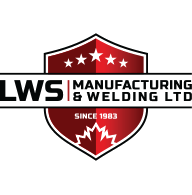Tips for Welding Stainless Steel
Whether you are a beginner or a seasoned professional, welding stainless steel can pose unique challenges. At LWS Manufacturing & Welding, we provide a range of expert metal welding and fabrication services, and we want to share our knowledge with you. That is why we have put together some invaluable tips for welding stainless steel and mastering the art of welding.
1. Choose the Right Filler Material
When it comes to welding stainless steel, the choice of filler material can make a significant difference. It is crucial to match the filler material to the base material as closely as possible. For instance, when welding austenitic stainless steel, which is the most common type, using a filler material such as 308L, 316L, or 347 stainless steel is often ideal.
2. Proper Joint Preparation
Thoroughly cleaning and preparing the joint before welding is key to achieving strong, clean welds. Make sure to remove any oil, grease, paint, or dirt that may be present, as these impurities can lead to porosity and a lack of fusion in your weld. Use a stainless-steel brush designed for this purpose, as brushes previously used on carbon steel can contaminate the stainless steel.
3. Control Heat Input
Stainless steel is highly sensitive to high temperatures. Excessive heat can damage the material, leading to warping or distortions. Moreover, it can cause the chromium in stainless steel to react with carbon, leading to a condition known as “chromium carbide precipitation”. This condition can severely degrade the corrosion resistance of stainless steel. To avoid these issues, it is best to use a low heat input and allow the material to cool down between passes.
4. Back Purge for Quality Welds
In welding processes like TIG and MIG, a process known as “back purging” can be used to shield the back of the weld from oxidation. This process involves feeding an inert gas, such as argon, to the back of the weld. The gas displaces the air and prevents the formation of an oxidized layer, thus, preserving the corrosion resistance and strength of the stainless steel.
5. Post-Weld Cleaning and Passivation
After welding, cleaning the weld and surrounding areas is essential to maintaining the corrosion resistance of the stainless steel. Using a pickling paste or a passivating solution can remove any iron contamination and oxidized layer, restoring the protective chromium-oxide layer on the surface of the stainless steel.
6. Practice Safety Measures
Always ensure that you follow the necessary safety guidelines when welding stainless steel. Make sure to do everything you can to prevent welding splatter. This includes using appropriate personal protective equipment (PPE), such as welding helmets, gloves, and protective clothing, and ensuring adequate ventilation, as welding stainless steel can produce harmful fumes.
Since becoming proficient at welding stainless steel takes time and practice, we highly recommend getting our expert welding services. At LWS Manufacturing & Welding, we are committed to helping our clients achieve the best results in their welding projects. Visit our shop in Abbotsford, BC or contact us at 604-854-1277 for welding services in the Fraser Valley.




